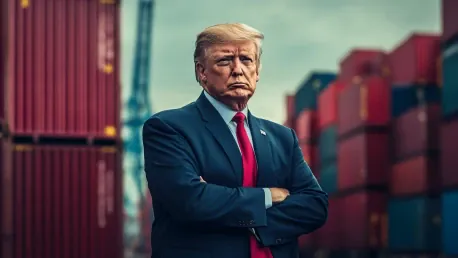Maryanne Baines is an authority in Cloud technology with extensive experience in evaluating various cloud providers, their technology stacks, and product applications across different industries. In this interview, we discuss the impact of President Trump’s tariffs on government technology purchases, the strategies employed by supply chain teams to assess and mitigate these impacts, and the importance of monitoring the country of origin for technology components.
How do you think President Trump’s tariffs will affect the government’s technology purchases? Which types of devices do you expect to be most impacted by the tariffs? Could you explain why laptops and monitors are particularly affected? Are there any product lines not significantly influenced by the tariffs? How are you preparing for possible price increases and delays in order fulfillment?
The tariffs will significantly increase the costs of devices that government agencies routinely purchase, such as laptops and monitors. These devices are primarily affected because they are mostly manufactured in China, making them directly subject to the increased tariffs. On the other hand, desktops, storage solutions, and mobile devices are less concerning due to their varied manufacturing locations and the fact that some original equipment manufacturers (OEMs) are moving their operations out of China. To prepare for potential price increases and delays, supply chain teams are closely monitoring the situation to communicate any changes to customers promptly.
Can you walk us through how CDW’s supply chain team plans to assess the impact of the tariffs? What steps are involved in understanding the percentage of products manufactured in China? How do you differentiate between products bought directly from OEMs and those from distributors? How might the tariffs slow down the customs process for overseas products?
The assessment process involves determining the percentage of products that are manufactured in China. This includes differentiating between products bought directly from OEMs and those sourced from distributors. This differentiation helps in understanding the extent of exposure to the tariffs. The tariffs could potentially slow down the customs process, impacting how we procure overseas products. Any resulting delays or cost increases will need to be communicated quickly to both our partners and customers.
What specific challenges does an OEM face if it decides to move operations to Taiwan? How would across-the-board tariffs on all imports affect this decision? Is relocating operations to the U.S. a viable solution, as suggested by Trump?
Moving operations to Taiwan presents several challenges for OEMs, such as the need to establish new supply chains and potentially higher operational costs. Should there be across-the-board tariffs on all imports, the benefit of moving to Taiwan might be negated. Relocating operations to the U.S. is one of Trump’s suggestions, but it’s a complex and costly endeavor that might not be feasible for all manufacturers in the short term.
Do tariffs present any new security challenges for the supply chain? How does the prohibition of certain Chinese technologies impact your supply chain strategy? What measures has CDW implemented to comply with existing regulations?
Tariffs do not necessarily introduce new security challenges, as the existing prohibition of certain Chinese technologies has already shaped our supply chain strategy. We work with sellers to ensure compliance with these regulations, maintaining a decent grasp on where our products are manufactured. CDW has implemented measures such as ISO 27001 and 20000 certifications to manage information security and quality, ensuring we adhere to rigorous standards.
How important is monitoring the country of origin for individual components within devices? Can you elaborate on the gaps in data regarding the country of origin for your products? How do OEMs and distributors currently track country of origin information? What improvements are needed in the industry for better component-level tracking?
Monitoring the country of origin for components is increasingly important for understanding compliance and mitigating risks. Currently, there are gaps in data, as many OEMs and distributors do not track the country of origin at a machine or serial level. They only report where the final product was manufactured. The industry needs to mature in terms of capturing and standardizing component-level information to close these gaps and improve overall tracking and traceability.
What role does the International Organization for Standardization (ISO) certification play in mitigating risks? How do ISO 27001 and ISO 20000 certifications help in managing supply chain security and quality? What additional measures might enhance supply chain governance and risk mitigation?
ISO certifications play a crucial role in mitigating risks by providing structured frameworks for security and quality management. ISO 27001 certification helps manage information security risks, while ISO 20000 ensures quality service management. Additional measures that could enhance supply chain governance include adopting industry-wide standards for component-level tracking and establishing more stringent risk mitigation frameworks.
Do you have any advice for our readers?
My advice would be to stay informed about changes in the global trade environment and be proactive in assessing and mitigating potential risks. Continuous improvement in supply chain transparency and adopting international standards can significantly enhance resilience and ensure compliance.









